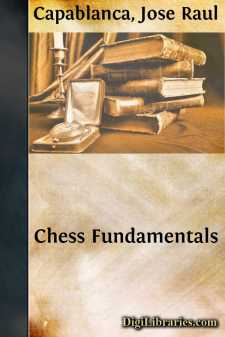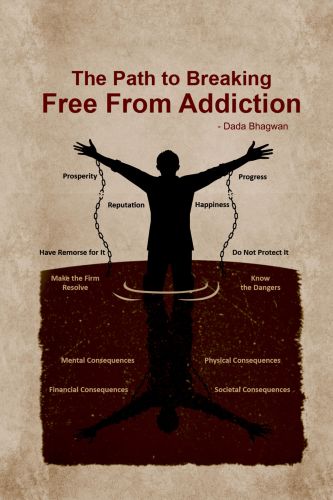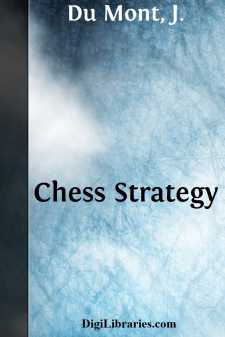Categories
- Antiques & Collectibles 13
- Architecture 36
- Art 48
- Bibles 22
- Biography & Autobiography 813
- Body, Mind & Spirit 142
- Business & Economics 28
- Children's Books 17
- Children's Fiction 14
- Computers 4
- Cooking 94
- Crafts & Hobbies 4
- Drama 346
- Education 46
- Family & Relationships 57
- Fiction 11829
- Games 19
- Gardening 17
- Health & Fitness 34
- History 1377
- House & Home 1
- Humor 147
- Juvenile Fiction 1873
- Juvenile Nonfiction 202
- Language Arts & Disciplines 88
- Law 16
- Literary Collections 686
- Literary Criticism 179
- Mathematics 13
- Medical 41
- Music 40
- Nature 179
- Non-Classifiable 1768
- Performing Arts 7
- Periodicals 1453
- Philosophy 64
- Photography 2
- Poetry 896
- Political Science 203
- Psychology 42
- Reference 154
- Religion 513
- Science 126
- Self-Help 84
- Social Science 81
- Sports & Recreation 34
- Study Aids 3
- Technology & Engineering 59
- Transportation 23
- Travel 463
- True Crime 29
Chess Fundamentals
Description:
Excerpt
CHAPTER I
First Principles: Endings, Middle-Game and Openings
The first thing a student should do, is to familiarise himself with the power of the pieces. This can best be done by learning how to accomplish quickly some of the simple mates.
1. SOME SIMPLE MATES
Example 1.—The ending Rook and King against King.
The principle is to drive the opposing King to the last line on any side of the board.
In this position the power of the Rook is demonstrated by the first move, R - R 7, which immediately confines the Black King to the last rank, and the mate is quickly accomplished by: 1 R - R 7, K - Kt 1; 2 K - Kt 2.
The combined action of King and Rook is needed to arrive at a position in which mate can be forced. The general principle for a beginner to follow is to
keep his King as much as possible on the same rank, or, as in this case, file, as the opposing King.
When, in this case, the King has been brought to the sixth rank, it is better to place it, not on the same file, but on the one next to it towards the centre.
2...K - B 1; 3 K - B 3, K - K 1; 4 K - K 4, K - Q 1; 5 K - Q 5, K - B 1; 6 K - Q 6.
Not K - B 6, because then the Black King will go back to Q 1 and it will take much longer to mate. If now the King moves back to Q 1, R - R 8 mates at once.
6...K - Kt 1; 7 R - Q B 7, K - R 1; 8 K - B 6, K - Kt 1; 9 K - Kt 6, K - R 1; 10 R - B 8 mate.
It has taken exactly ten moves to mate from the original position. On move 5 Black could have played K - K 1, and, according to principle, White would have continued 6 K - Q 6, K - B 1 (the Black King will ultimately be forced to move in front of the White King and be mated by R - R 8); 7 K - K 6, K - Kt 1; 8 K - B 6, K - R 1; 9 K - Kt 6, K - Kt 1; 10 R - R 8 mate.
Example 2.
Since the Black King is in the centre of the board, the best way to proceed is to advance your own King thus: 1 K - K 2, K - Q 4; 2 K - K 3. As the Rook has not yet come into play, it is better to advance the King straight into the centre of the board, not in front, but to one side of the other King. Should now the Black King move to K 4, the Rook drives it back by R - R 5 ch. On the other hand, if 2... K - B 5 instead, then also 3 R - R 5. If now 3... K - Kt 5, there follows 4 K - Q 3; but if instead 3... K - B 6; then 4 R - R 4, keeping the King confined to as few squares as possible.
Now the ending may continue: 4...K - B 7; 5 R - B 4 ch, K - Kt 6; 6 K - Q 3, K - Kt 7; 7 R - Kt 4 ch, K - R 6; 8 K - B 3, K - R 7. It should be noticed how often the White King has moved next to the Rook, not only to defend it, but also to reduce the mobility of the opposing King. Now White mates in three moves thus: 9 R - R 4 ch, K - Kt 8; 10 R - any square on the Rook's file, forcing the Black King in front of the White, K - B 8; 11 R - R 1 mate....












